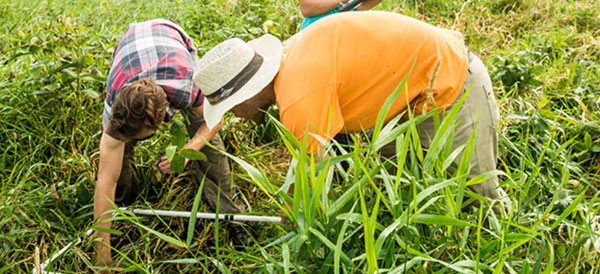Habitat exchanges: How do they work?
Creating conservation incentives that work for people, wildlife and the economy

Monarch butterfly habitat being measured in Minnesota
With hundreds of species proposed for listing under the Endangered Species Act, our nation's system of protecting at-risk wildlife has not kept pace with the need to feed and fuel America's growth. We need new conservation tools – tools that protect wildlife and allow our economy to flourish.
Private landowners and industry are essential allies in balancing environmental and economic needs. This is particularly true considering that 75 percent of all land in the United States is privately held. Reversing declines in species will require setting up vast habitat ranges across multiple states at an unprecedented scale and pace.
The basics
In a habitat exchange, landowners such as farmers and ranchers create, maintain and improve habitat on their property and earn credits for their efforts. Landowners sell these credits to industry to compensate for development, such as roads, transmission lines and wind turbines, that impact species and habitat.
An independent habitat exchange administrator monitors and verifies credit transactions and reports on progress to ensure species protection. Every credit sale makes species and habitat better off.
Exchanges in development
Habitat Exchanges are currently being developed for multiple species including the monarch butterfly, greater sage-grouse, and several species in the California Central Valley. Exchanges are being considered for other at-risk species in the future.
Related blog posts
See more habitat exchange posts »










